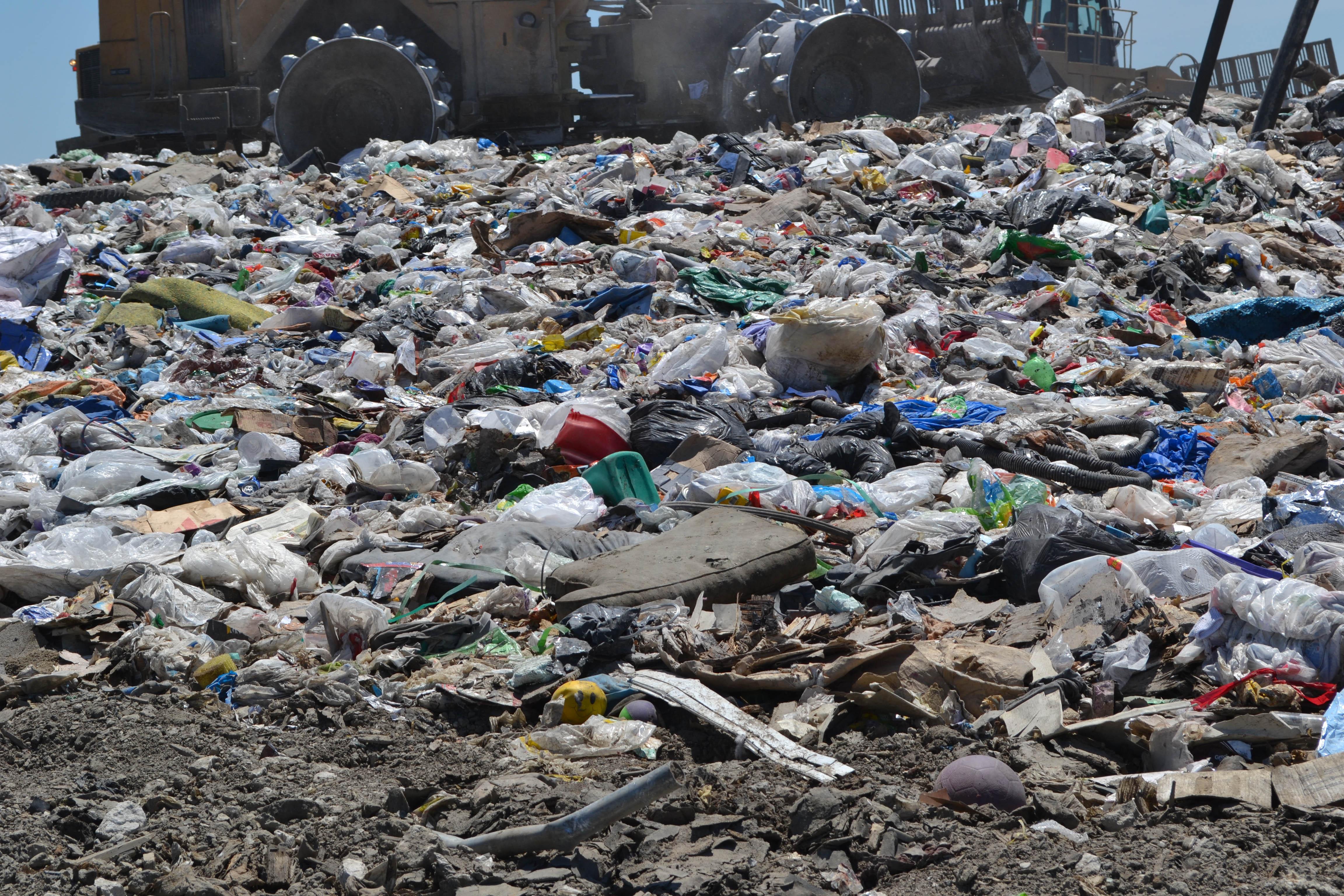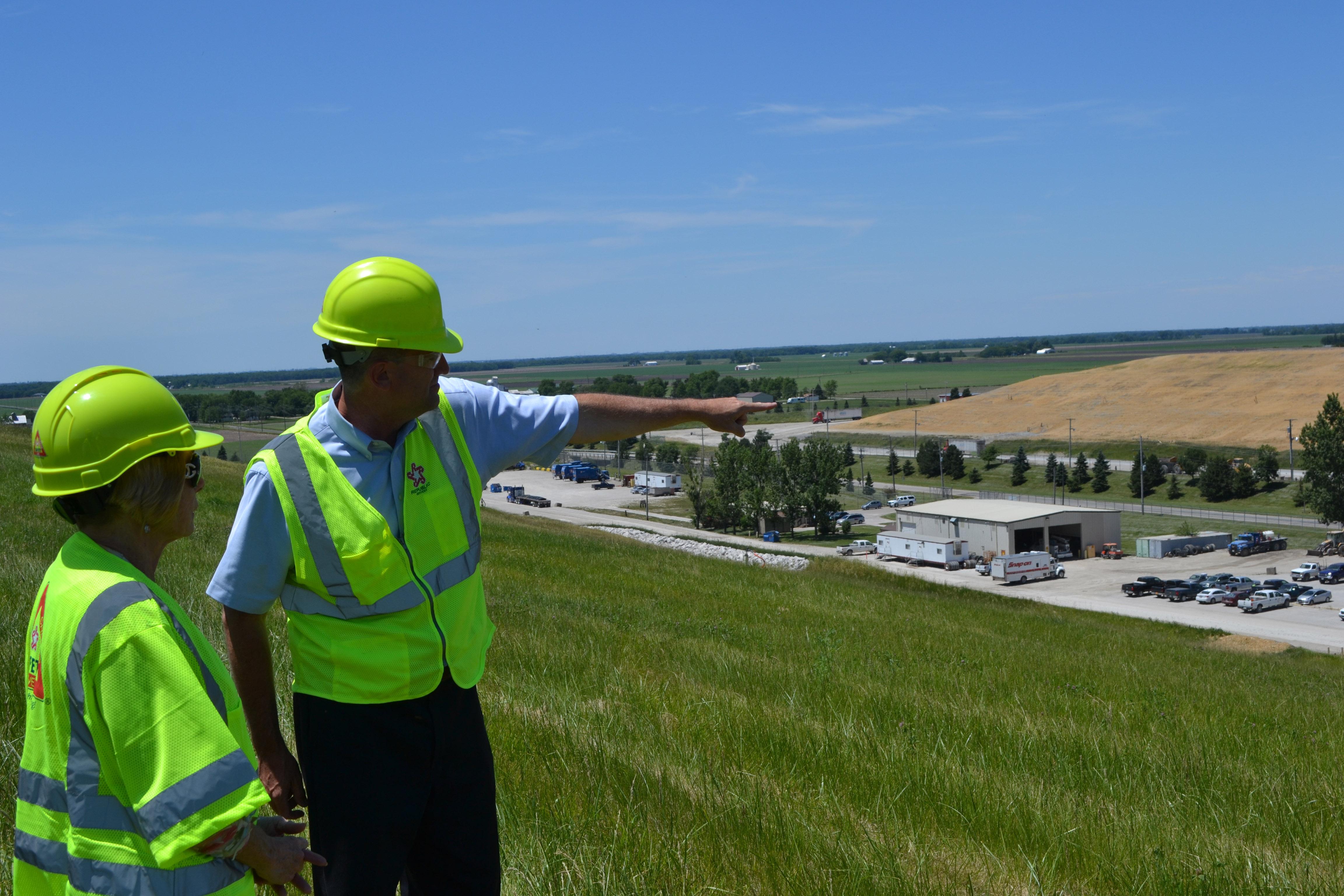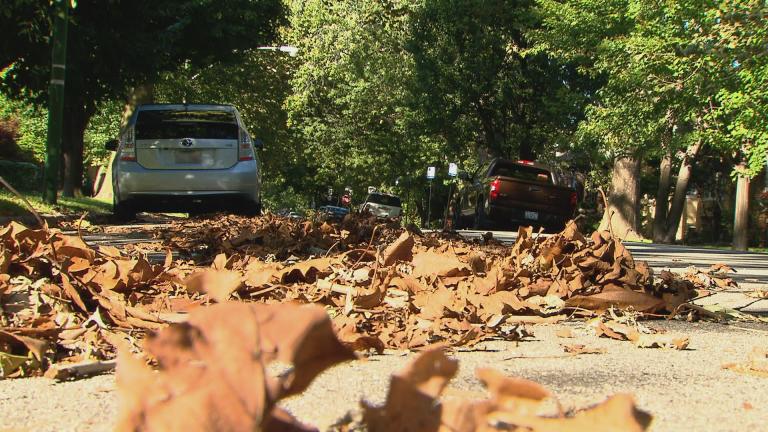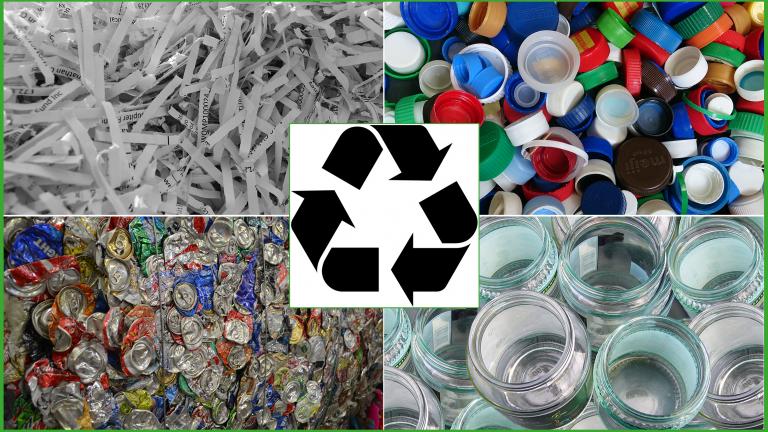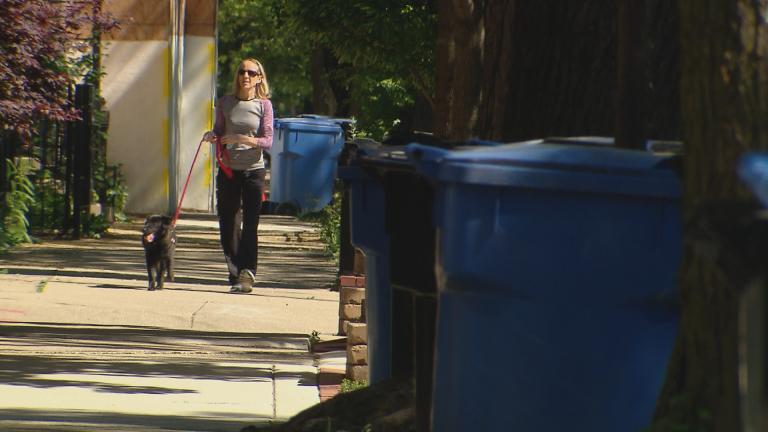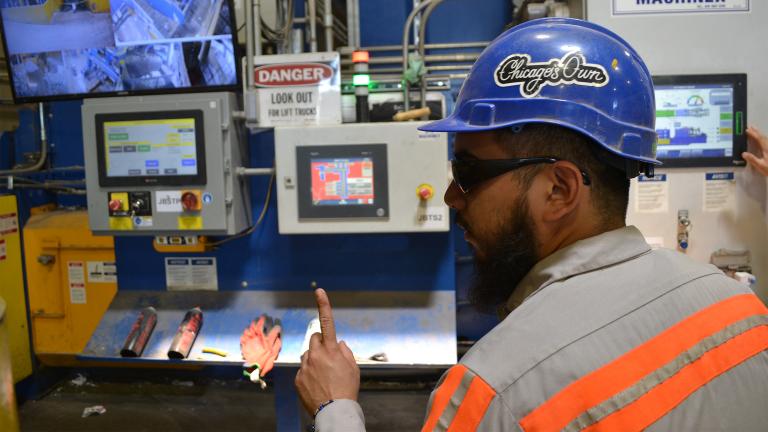PONTIAC, Ill. – Bill Janes can tell you with surprising accuracy where your trash was dumped at his landfill the day you accidentally tossed a favorite piece of jewelry. But that doesn’t mean you’ll get it back.
Janes manages one of four area landfills that receive waste from Chicago. The landfill, owned by Republic Services, is 2 miles off I-55 in Pontiac and features two main hills spanning 550 acres, making it one of the largest landmarks (and likely the tallest) in Livingston County.
Six days a week, garbage trucks from Chicago and the suburbs deliver a total of 5,000 tons of trash that are dumped into a section of the landfill measuring 10 to 20 acres. As part of his duties as the landfill’s operations manager, Janes keeps a log that pinpoints where trash lands at any given time.
“I know what part of the hill we’re dumping in every day,” Janes said during a tour of the landfill earlier this month.
Frequently, Janes or one of his colleagues at Republic will get a phone call from someone saying, “‘I threw my jewelry away,’” or worse: a wedding ring.
“And that’s usually a long shot,” said Brian Holcomb, general manager of Republic’s Chicago operations.
The company’s records of where trash is dumped does, however, come in handy when Janes or Holcomb receives a call from a police department or other law enforcement agency.
“Somebody will have put something in the trash that law enforcement is trying to find – maybe it’s records, evidence – and they’ll ask us, ‘The load, it left today. Has it dumped yet?’” Holcomb said. “And we can kind of track back – and if the truck is in line waiting, we’ll pull it off to the side – and sometimes they’ll find what they’re looking for.”
In such cases, police often bring search dogs to help track down missing records or evidence. They also look for location clues in any mail that winds up at the landfill.
![]()
“They start sifting through the trash, and they’re looking for addresses,” Janes said. “The last time we had to assist with a search, they were down to a section of trash where they had addresses to the city block where they thought [the trash originated]. That’s how they know they’re getting close.”
Holcomb said there is usually a 50-50 chance that police are able to find what they’re looking for. Sometimes, though, “it’s really like looking for a needle in a haystack,” Janes said.
Standing next to the sprawling pile of trash where trucks are unloading, it seems like a miracle that any missing items, whether jewelry or paper files, are ever recovered.
In addition to searching a massive collection of waste, those looking to track down lost valuables face another obstacle: odor.
“It smells like a skunk could’ve been in that load,” Janes said as a truck tips its rectangular container upward and an avalanche of trash shoots out, leaving a cloud of dust in its wake.
The smell is rancid, but wait – is there really a skunk in there?
Likely yes, Holcomb said.
“Think of it this way: This is 5,000 tons [of trash],” he said. “Inevitably, somewhere in the collection operation the last few days there was a skunk that got in the load somehow.”
Scavengers
Other than calls from police or those looking for lost jewelry or other valuables, Janes said Republic also gets contacted by companies that have to discard or destroy equipment, such as a car parts manufacturer that made parts that failed to meet specifications.
“When something like that happens, everyone knows that you cannot scavenge out of the trash,” Janes said. “Like, if there’s a brand new set of wheels and rims that happened to be attached, you cannot go in and grab that.”
On another occasion, Republic received a shipment that failed to pass customs and had to be destroyed.
“It was some type of unit – probably as large as this truck – that would not pass customs for whatever reason,” Janes said. “I really don’t know what it was. It was like a big square [container] – you could tell it was really expensive. It had to be destroyed. [The company] had people come out. We had to give them a certificate of destruction. They took pictures to make sure that piece of equipment was destroyed.”
Follow Alex Ruppenthal on Twitter: @arupp
![]()
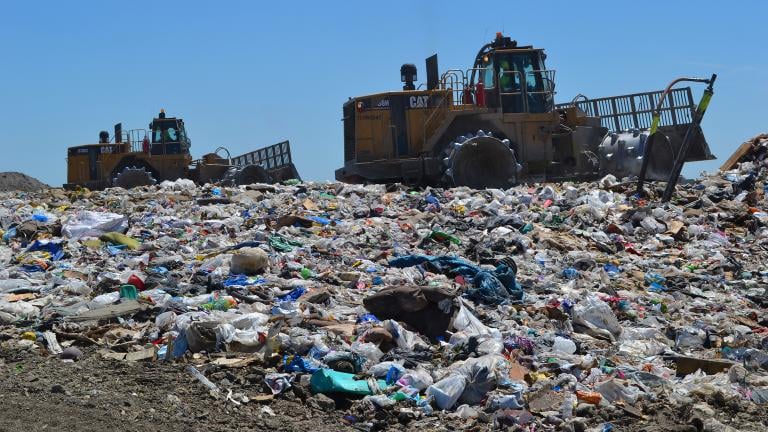 Chicago’s Trash Doesn’t Go to Waste at Pontiac Landfill
Chicago’s Trash Doesn’t Go to Waste at Pontiac Landfill
June 26: About 5,000 tons of trash from the Chicago area is dumped every day at a landfill in Livingston County, but hardly any of it goes to waste. How yesterday’s trash becomes tomorrow’s energy.
 Where Does Chicago’s Garbage Go?
Where Does Chicago’s Garbage Go?
June 26: Chicagoans dump more than 800,000 tons of garbage into their bins every year, but once city garbage trucks leave the alley, most of us have no idea where it all goes. We follow the trail.



